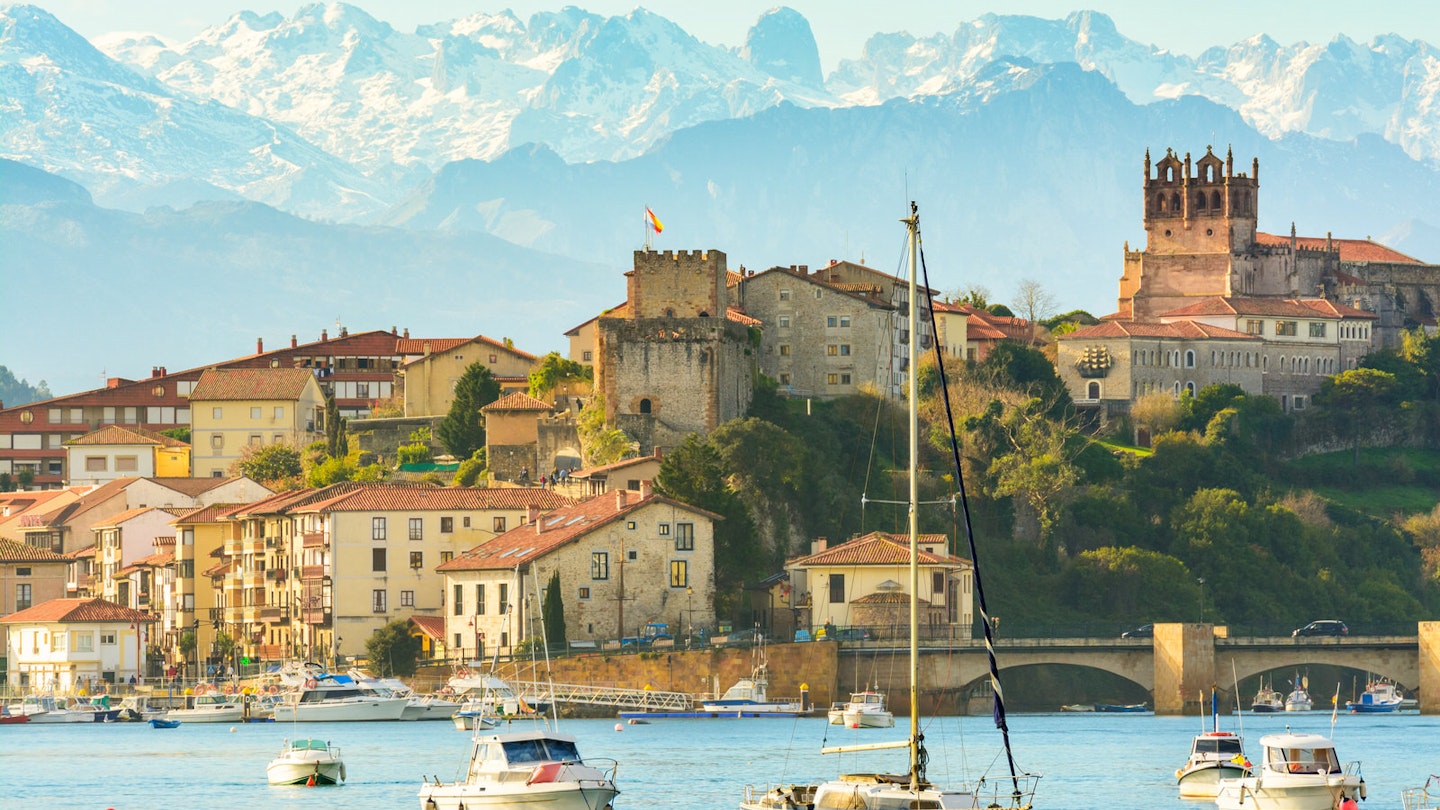Discover Cantabria: An Underrated Mediterranean Oasis
Sitting pretty on the Iberian Peninsula’s north coast, tiny Cantabria offers a completely different vision of Spain. Still largely unknown to outsiders – Spanish tourists here outnumber foreigners 4 to 1 – this invitingly green region offers astounding variety in a relatively small space.
Tucked away in Cantabria’s lush landscapes are some of the world’s most extraordinary prehistoric cave paintings, dozens of glorious, off-the-beaten-track beaches and one of Europe’s most spectacular and overlooked mountain ranges, the Picos de Europa. At the center of it all is Santander, Cantabria’s resurgent capital city.
Santander: A Capital City Reborn
With its international airport and direct ferry service from England and Ireland, Santander makes a perfect starting point. Cantabria’s lively capital has a newfound swagger in its step, thanks to its recently revamped waterfront. The busy highway that used to separate Santanderinos from the sea has been moved underground, allowing the leafy Jardines de Pereda to expand and creating a welcoming green corridor between the city and the bay. Claiming center stage here is the futuristic Centro Botín, a cultural center designed by Italian architect Renzo Piano.
Since its inauguration in summer 2017, the Centro Botín has quickly become Santander’s new focal point and most popular local hangout. Cantilevered out over the Bay of Santander, its labyrinth of terraces and elevated catwalks affords panoramic perspectives on the bay and the city skyline. In the vast plaza below, skateboarding teenagers mingle with tea-sipping grandmothers, and families head out for a stroll or a spin on the merry-go-round. The Centro Botín’s top two floors house cutting-edge contemporary art exhibits, while the café downstairs serves everything from morning coffee to gourmet lunches under the direction of Michelin-starred chef Jesús Sánchez.
Relaxing Beaches and Historical Landmarks
Beyond these new attractions, Santander is an engaging place with enough variety to keep you busy for a day or two. A short walk inland reveals the city’s buzzing back street coterie of pintxos bars and nightspots, while a stroll around the bay brings you to the verdant Peninsula de la Magdalena and Playa del Sardinero, the city’s summer playground. Here, it’s easy to conjure up visions of Santander’s early 20th-century heyday at the lavish Palacio de la Magdalena, a summer retreat built for King Alfonso XIII and Queen Victoria Eugenia.
Coves, Cliffs, and Stunning Coastal Scenery
If the high-rise sprawl of Spain’s southern coastal resorts leaves you cold, Cantabria’s wild and sparsely populated beaches are the perfect antidote. The region’s gorgeous coastline, undulating for 150km past secluded coves backed by emerald headlands, offers a vision of Spanish beach life that’s better attuned to nature lovers than party people. Many of Cantabria’s finest beaches are only accessible on foot, enhancing the close-to-nature vibe. Surfers, day hikers, and pilgrims on the Camino del Norte – a lesser-known feeder route to Santiago de Compostela – all thrill to the dramatic scenery.
In eastern Cantabria, between Laredo and Castro Urdiales, a stunning coastal walk descends past grazing sheep and rocky outcrops to Playa de Sonabia, tucked into a wave-sculpted cove at the foot of a formidable bluff. Doubling back towards Santander, the Playas de Langre are another quintessential Cantabrian destination: two long crescents of sand ringed by stratified cliffs. Furthermore, further west, near the Asturian border, yet another pristine series of beaches unfolds for kilometers between Comillas and San Vicente de la Barquera.
Centenary Celebrations in Spain’s Oldest National Park
Cantabria’s natural allure doesn’t end at the seashore. In the region’s southwestern corner, only 15km inland from the Atlantic, the breathtaking Picos de Europa rise abruptly to heights exceeding 2500 meters. These jagged limestone peaks serve as a beacon for outdoor enthusiasts with some of Spain’s most scenic landscapes: high-altitude lakes, cow-speckled alpine pastures, and deeply chiselled gorges. You don’t need to be a serious climber to enjoy the high country; follow the Río Deva an hour inland from the coast for breathtaking views.
Close Encounters with Cantabrian Cave Art
Cantabria’s fissured limestone landscape has served for millennia as a refuge for Paleolithic people, who left behind some of the world’s most remarkable prehistoric art. Ten different caves in Cantabria are UNESCO World Heritage sites for their vividly rendered images of aurochs, deer, bison, and other creatures. The intimacy of the experience at Cantabrian caves, such as the exquisite Cueva de Covalanas, enhances the profound connection to the ancient art.
Rock-Hewn Churches, Gaudí Gardens, and Other Cantabrian Treasures
Cantabria’s slew of attractions may just tempt you to spend your entire trip here. Two easy day trip destinations include medieval Santillana del Mar, featuring cobblestoned lanes and a 12th-century Romanesque monastery, and Comillas, a treasure trove of eclectic architecture, including Palacio de Sobrellano and Gaudí’s whimsical Capricho.
With your own wheels, it’s worthwhile to explore further afield. In an hour or two, you can escape into Cantabria’s fabulously off-the-beaten-track hinterland, tracing the course of the Ebro River or meandering through remote mountain hamlets.





